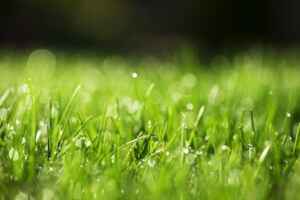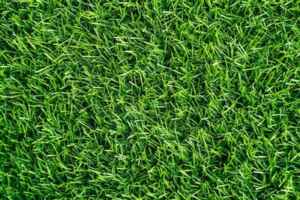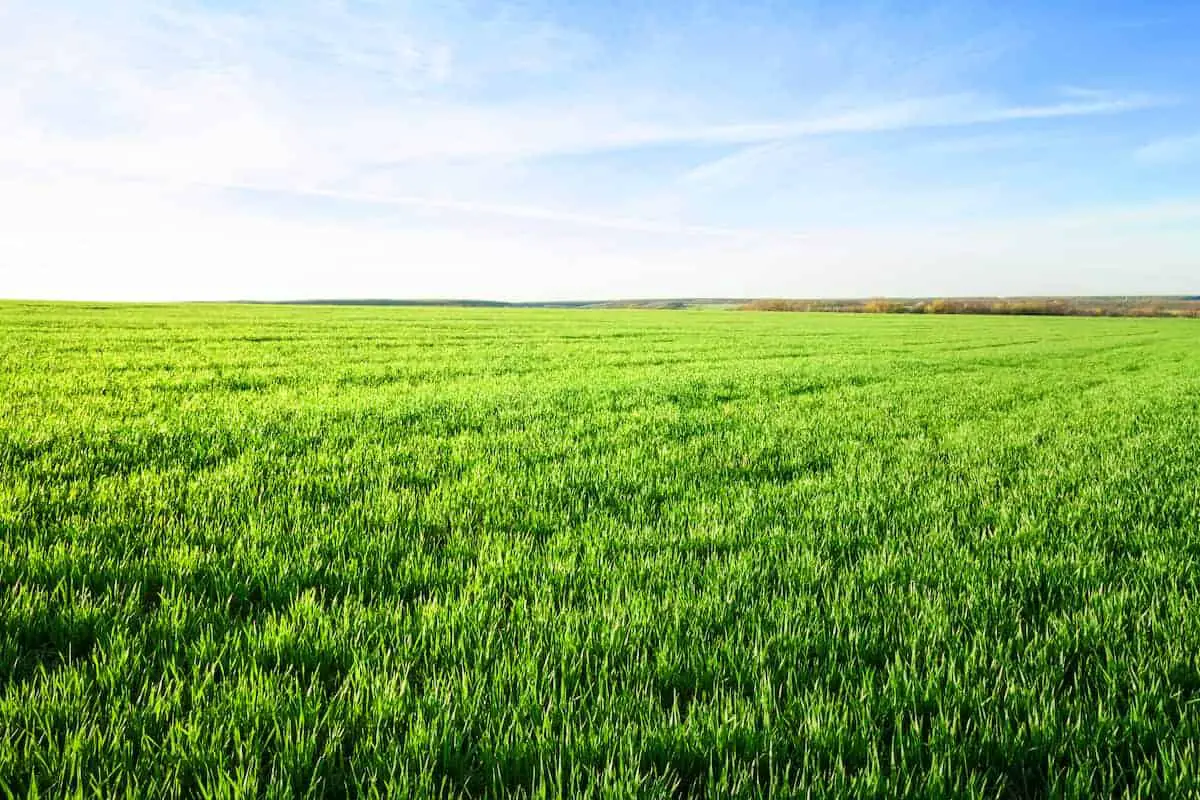Grass Types That Need Less Watering
What type of grass requires the least amount of watering? The grass that needs less water when compared to others is fescue. It can do well in concentrated amounts of water as well as desiccating heat (when summer weather is dry and hot) for short periods without sustaining any damage.
After learning about the benefits of fescue, I decided to create a list of the best grass options for homeowners who are looking for a low-maintenance option. These lawn options will require the least amount of water during hot summer months when the grass is at its thirstiest.
Watering your lawn can be a time-consuming process, especially during the summertime and periods of drought. When our grass was ruined by heavy rain, we turned to our experts for advice. We were surprised to hear that some types of grass require more water than others.
 Best Low Maintenance Grass Options
Best Low Maintenance Grass Options
There are a lot of grasses that need to be watered frequently, but these four types will require the least water:
Bermudagrass
This grass requires the least amount of water out of all grass types. It is a warm-season grass that can be found in Bermuda, Hawaii, and the southern regions of the United States.
It thrives in many different climates but doesn’t do well with frost or prolonged cold weather.
Fescue
If you are looking for grass that doesn’t need to be watered as frequently as others, fescue is the best option. It can do well in concentrated amounts of water as well as desiccating heat (when summer weather is dry and hot) for short periods without sustaining any damage.
Kentucky Bluegrass
You should aim to water this grass once a day, but it can go up to 2 days before needing another watering session because it doesn’t require as much as others.
It can grow in compacted soil conditions and withstand weed invasion far better than other grass types do.
Perennial Ryegrass
Early morning or late evening are the best times for a quick soak to avoid evaporation. This can be a problem with this type of grass if you let the sun beat down on your lawn too often without giving it a chance to absorb enough water.
Zoysia
This grass doesn’t need to be watered as often, but it requires more water than the other grass types listed in this article.
It tends to have problems with evaporation when temperatures are high and can sustain foliage damage if you don’t give it enough water.
Buffalograss
This grass is a warm-season grass that can go for weeks without water, but it will not look as lush and green as the other grass types. It is drought tolerant and can handle cold weather, but it doesn’t do well in shady areas.
You don’t have to worry about your grass turning brown and crispy during the hot summer months if you live in a dry climate. There are grass types that thrive in these conditions, and they don’t require the same amount of watering as other grasses do.
Fescue is the best option for homeowners who are looking for low-maintenance grass that doesn’t need to be watered as often. If you live in a humid weather climate, you should look into grass types such as fescue before making a purchase.
St. Augustine
This grass does well in climates with high levels of humidity, but it requires more water than the grasses mentioned in this article.
Homeowners who live in these climates should be sure to water their lawns frequently to avoid brown patches and damage to the grass.
There are many grass types to choose from, so it is important to read up on grass care before making a purchase.
Bahiagrass
This grass is a warm-season grass that can go for weeks without water, but it will not look as lush and green as the other grass types. It is drought tolerant and can handle cold weather, but it doesn’t do well in shady areas.
How to Seed Your Yard Correctly
There are a few things you need to know before seeding your yard. The first is what type of grass you have. There are many types of grass, and each one needs to be seeded a different way.
You also need to know how much seed to use. If you use too much or too little, you won’t get the results you want.
The best time to seed your yard is in the fall. This is when the grass is going dormant and will not grow very much. If you seed it in the spring, the grass may grow so fast that it will overshadow the new seedlings.
When seeding your yard, make sure to spread the seed evenly You can do this by using a rake. Scattered grass will die quickly because it doesn’t have access to sunlight.
Follow These Simple Steps
- Make sure that the grass is dormant. This means there won’t be much growth during the spring months.
- Evenly spread out grass seeds across your lawn with a rake. You can also use a grass seeder if desired.
- Finally, water your grass regularly until new seedlings are healthy and tall enough for mowing. If done correctly, seeding grass can help maintain a green lawn all year round without all of the hassle!
Overseeding Tips for Homeowners
If you’re looking to switch your current lawn type to one of these low-maintenance types, be sure to over-seed your lawn in the fall when the weather starts to cool down. This will help your grass make the transition smoothly and avoid any brown patches that may occur due to drought conditions.
If you have brown patches in your lawn, or if the grass doesn’t seem to be as lush and green as it used to be, overseeding may be the solution. Overseeding is the process of planting new grass seedlings over top of old ones. This can be done once a year, or whenever you see fit.
The best time to over-seed your lawn is in the Fall when the grass is going dormant and will not grow very much. If you overseed in the Spring, the grass may grow so fast that it will overshadow the new seedlings.
When overseeding your lawn, make sure to spread the seed evenly. You can do this by using a rake. Scattered grass will die quickly because it doesn’t have access to sunlight.
 How to Maintain Your Grass All Year Long
How to Maintain Your Grass All Year Long
It is important to know how to maintain your grass so that it stays healthy throughout the entire year. Not maintaining grass can result in several issues later on, such as drought or fungal diseases, which can prevent grass from growing properly and even be dangerous for people and pets.
There are many ways how you can maintain your grass all year long. First of all, there are four seasons in a year: spring, summer, autumn, and winter. Each season requires different care for your lawn because they require different plants to grow. Here’s how you should take care of your lawn during specific seasons:
Spring
Spring starts with spring cleaning when you clean up debris from last autumn by raking. Then, prepare your lawn to be properly seeded by clearing out the old grass and treating it with an herbicide (a chemical used for killing weeds). If you have clover in your yard, treat it at this time also because it will compete with the new grass seedlings.
Don’t fertilize your yard until mid-April since too much nitrogen fertilizer can actually block how well grass grows.
During hot summer days, water your grass so that it keeps its green color. Mow your grass regularly to about two inches tall so that sunlight reaches all parts of the lawn.
Summer
During the summer, make sure to water your lawn regularly. Lawns that don’t get enough water will start to turn brown. You should also mow your lawn at a higher height so that it can stay strong and healthy in the hot sun.
Autumn
Autumn is when temperatures are lower and less sunlight reaches the grass blades, which makes them start growing less or stop growing altogether. You should keep mowing your lawn at the same height as you did in the summer and water it when needed.
However, do not mow as much as you did in the summer because of the decrease in growth. Fertilize your lawn lightly in late September or early October so that grass will have enough nutrients to store for winter.
Winter
In winter, it is important to make sure snow doesn’t stay on top of the grass for an extended period because it will suffocate the plants. If there’s a lot of snowfall, shovel a path so that people can still walk on the grass. Keep your lawn mowed at two inches tall and don’t fertilize it at all during this season.
The best way to keep track of how well you’re maintaining your grass is to perform a soil test at least once a year. You can take a soil sample by digging up a shovelful of soil from different areas of your lawn and mixing them.
Once you have the soil, take it to a lab to have it tested. The lab will tell you how much nitrogen, phosphorus, and potassium (NPK) your soil needs so that you can properly fertilize your lawn.
Maintaining your grass all year long can seem like a daunting task, but following these simple tips should make it easier for you. By knowing how to take care of your lawn during each season, you’ll be able to keep it healthy and looking great all year long!

